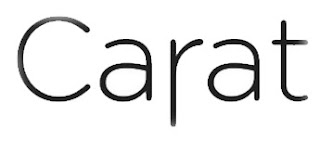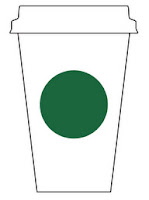TTABlog Quarterly Index: April - June 2018
E-mail subscriptions to the TTABlog are available. Just enter your e-mail address in the box on the right to receive a daily update via Feedblitz.

Section 2(a) - Deceptive:
Section 2(a) - False Association:
Section 2(d) - Likelihood of Confusion:
- TTAB Reverses 2(d) Refusal of CARAT for Airplane Connectivity Services: Unrelated to Broadcasting Services
- TTAB Test: Is GUARDIAN AUDIO for Professional Audio Gear Confusable With EGUARDIAN for Consumer Electronics? TTAB Test: Is NIGHT Confusable with NOCHE for Wine? [Yes]
- TTAB Test: Are Collectible Toy Figures Related to Plush Toys For Purposes of Section 2(d)? [Yes]
- TTAB Test: Is "FOUNDIT THEFT RECOVERY" Confusable With "IFI I FOUND IT" for GPS Tracking Devices? [Yes]
- Finding Beer and Wine Related, TTAB Affirms Section 2(d) Refusals of DEAD BIRD BREWING COMPANY and Dead Bird Design for Beer
- TTAB Test: Is GAVIOTA for Faucets Confusable With SEAGULL for Water Purification Units?
- PIRATE PISS for Beer Not Confusable With PYRAT for Rum, Says TTAB
- Precedential No. 20: Prior Registration of 5IVE RESTAURANT Fails to Shield 5IVE STEAKHOUSE From Section 2(d) Refusal
- TTAB Test: Are SAVORY ROASTERS and HEARTY ROASTERS Confusable for Pet Food?
- THE TROPICS for Restaurant Services Confusable With TROPIXX for Nightclub Services, Says TTAB
- TTAB Says No to PRETTY PLEASE WITH CHERRY ON TOP? for Ice Cream"
- TTAB Affirms Trifusal of NRG COFFEE for Coffee: 2(d), 2(e)(1) Descriptiveness and Deceptive Misdescriptiveness
- HONEYHOLE SANDWICHES for Restaurant Services Confusable with HONEY HOLE for Alcoholic Beverages, Says TTAB
- Precedential No. 17: TTAB Grants Section 2(d) Petition for Cancellation of KEMI OYL Registration; Laches Defense Fails
- TTAB Shuts Down NJ Turnpike Authority's 2(d) Opposition to JERSEY BOARDWALK PIZZA logo
- TTAB Test: Which of these Three Section 2(d) Refusals Was Reversed?
- Finding Marketplace Strength and Actual Confusion, TTAB Sustains "TOOLS USA" Opposition
- TTAB Dismisses Rapper DR. DRE's Opposition to DR. DRAI for Health-Related Services
- Finding Distilled Spirits Related to Wine, TTAB Sustains 2(d) Opposition to BEAR CREEK DISTILLERY
- WYHA? TTAB Finds "THE CYRKLE" Confusable with "THE CIRCLE" for Live Musical Services
- TTAB Reverses 2(d) Refusal of THE AUBURN SCHOOL - Not Confusable with AUBURN UNIVERSITY
- TTAB Test: Are Aerated Waters Related to Orange Juice for Section 2(d) Purposes?
- TTAB Test: Is KRANKY KOOKYS for Cookies Confusable With KRANKY for Chocolate Covered Corn Flakes?
- TTAB Test: Is DATA ATOM Confusable with ATOMIC DATA for Computer Support Services?
- Precedential No. 11: Despite Court Non-Infringement Ruling, TTAB Affirms 2(d) Refusal of MOAB for Automobiles and Parts
- TTAB Test: Is "VOLKS PILS" For Beer Confusable With "VOLK" for Vodka?
- TTAB Test: Is ROSA VELENO for Music Production Services Confusable with VELENO for Guitars?
- Precedential No. 10: LAROQUE & Design Confusable With LAROQUE for French Wines From Different Regions
Section 2(e)(1) - Mere Descriptiveness:
- TTAB Affirms Descriptiveness Refusal of “USR ID” For Security Software and Services
- TTAB Finds HOUSTON BITES Merely Descriptive of Website Featuring Restaurants
- TTAB Affirms Trifusal of NRG for Coffee: 2(d), 2(e)(1) Descriptiveness and Deceptive Misdescriptiveness
- TTAB Test: Which One of These Three Mere Descriptiveness Refusals Was Reversed?
- ROSSO GRANATO Merely Descriptive, Fails to Function as a Trademark for Wine, Says TTAB
- TTAB Test: Is BRAND THERAPY Merely Descriptive of Graphic Design Consulting Services?
Section 2(e)(2) - Primarily Geographically Descriptive:
- TTAB Sustains Opposition to SCOTTSDALE TAXI: Geographically Descriptive and Lacks Acquired Distinctiveness
- TTAB Affirms Geographical Descriptiveness Refusal of LEIPER'S FORK DISTILLERY for Clothing
Section 2(e)(4) - Primarily Merely a Surname:
Section 2(e)(5) - Functionality:
Section 2(f) - Acquired Distinctiveness:
- TTAB Reverses PETROSSIAN Surname Refusal Due to Transferred Distinctiveness
- TTAB Sustains Opposition to SCOTTSDALE TAXI: Geographically Descriptive and Lacks Acquired Distinctiveness
- PET GRASS Lacks Acquired Distinctiveness for Pet Food and Pet Store Services, Says TTAB
- Precedential No. 14: TTAB Rules that a Phrase May Have Acquired Distinctiveness Even Though It Contains a Generic Term
Fraud:
- Despite Phony Specimen of Use, TTAB Finds No Fraud, Dismisses COPPER 88 Opposition
- TTAB Denies Motion to Add Bogus Fraud Claim to Petition for Cancellation
- CAFC Vacates and Remands: TTAB Applied Wrong Test in Finding ZERO Not Generic for Soft Drinks
- TTAB Test: Is "THE MASTER CLASS" Generic For Educational Services in the Field of Beauty?
- TTAB Finds "THE JOINT" Generic for .... Guess What?
- Precedential No. 17: TTAB Grants Section 2(d) Petition for Cancellation of KEMI OYL Registration; Laches Defense Fails
- Precedential No. 15: Laches Dooms Petition to Cancel TRAILERTRADERS.COM Supplemental Registration
- TTAB Test: Are These Specimens of Use Acceptable for Bottle Caps?
- ROSSO GRANATO Merely Descriptive, Fails to Function as a Trademark for Wine, Says TTAB
- TTAB Affirms Rejection of TRUWALLET Specimen of Use for Lack of Use with Recited Services
- TTAB Affirms Refusal of Bottle Shape for Mezcal: Lacks Inherent Distinctiveness and Fails to Function as a Trademark
Discovery/Evidence/Procedure::
- Precedential No. 21: TTAB Extends Safer Requirements to Internet Evidence Submitted by Applicants
- Precedential No. 19: TTAB Rules that Evidence From A Website No Longer Active Is Not Probative
- Precedential No. 18: TTAB Extends Safer Rule to Internet Evidence During Ex Parte Prosecution
- Precedential No. 13: TTAB Denies Motion to Strike Pre-Trial Disclosures of Authenticating Witnesses
- Precedential No. 11: Despite Court Non-Infringement Ruling, TTAB Affirms 2(d) Refusal of MOAB for Automobiles and Parts
- Professor McCarthy Critiques the CAFC's ZERO Decision
- CAFC Vacates and Remands: TTAB Applied Wrong Test in Finding ZERO Not Generic for Soft Drinks
- Professor McCarthy Critiques the CAFC's ZERO Decision
- Recommended Reading: TTAB Chief Judge Rogers Interview
- Ted Davis: 2018 Annual Review of Trademark Cases
- TTABlog Posts July 2018 Hearing Schedule
- USPTO Exam Guide 2-18: Scandalousness Refusals on Hold Pending Final Resolution of In re Brunetti
- TTAB Posts May 2018 Hearing Schedule
- TTAB Posts April 2018 Hearing Schedule
Text Copyright John L. Welch 2018.

































